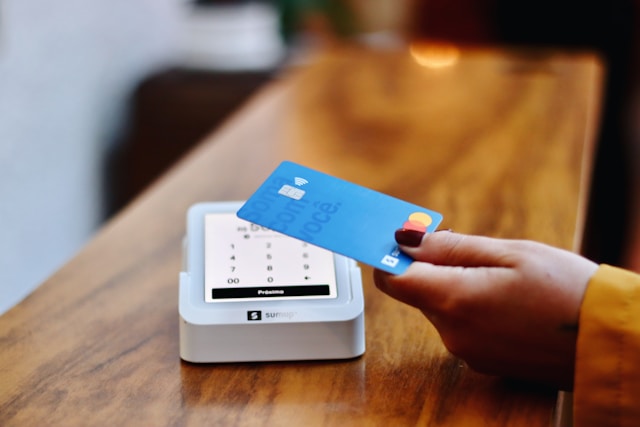It’s incredibly annoying to prepare for a purchase only to find you must walk to the payment counter to complete your transaction. Modern shoppers demand convenience throughout their shopping experience in this rapidly moving world. At this point a portable payments solution becomes essential.
Portable payment systems transform business customer interactions. A variety of businesses including busy restaurants, retail stores and mobile businesses can achieve better customer service and increase profits by implementing these systems.
Inside This Guide
- What Are Portable Payment Systems?
- Key Benefits for Customer Experience
- Industries Transforming With Portable Payments
- Latest Statistics on Mobile Payments
- How to Choose the Right Solution
- Implementation Success Tips
What Are Portable Payment Systems?
Portable payment systems refer to payment terminals which can operate without being attached to a traditional counter or checkout area. These mobile payment terminals enable businesses to process transactions in any location at any time.
Modern portable payment solutions typically include:
- Wireless card readers which can be connected to smartphones and tablets
- All-in-one handheld POS systems
- Mobile EFTPOS terminals
- NFC-enabled devices for contactless payments
These systems offer great flexibility which represents their primary advantage. Service personnel can use mobile payment terminals to process transactions at customer locations which includes tables in restaurants, retail store aisles or residential service areas.
Key Benefits for Customer Experience
1. Reduced Wait Times
Nobody likes standing in line. The use of portable payment terminals helps businesses eliminate lines by processing transactions immediately on location. During peak hours traditional fixed terminals become bottlenecks so this method proves especially beneficial.
2. Personalized Service
Staff members can remain with customers from start to finish during their shopping experience when they use portable payment devices. Businesses can provide personalized services through improved customer interactions. The best mobile payment solutions enable staff to access customer information, purchase history, and preferences right at their fingertips.
3. Flexibility in Payment Options
Modern customers expect payment flexibility. Portable systems are designed to accept a variety of payment methods.
- Credit and debit cards
- Mobile wallet payments (Apple Pay, Google Pay)
- Contactless transactions
- Traditional chip and PIN
4. Enhanced Privacy and Security
Multiple customers hold privacy during payment transactions as a significant concern. Customers can utilize portable terminals to input their PINs and conduct transactions remotely from crowded areas which delivers superior security and privacy compared to stationary terminals.
5. Streamlined Experience
Portable payment systems integrate transactions into customer interactions without requiring a physical move to a separate terminal location. This results in a smoother and more pleasurable transaction process.
Industries Transforming With Portable Payments
Hospitality
Portable payment solutions found swift adoption within the restaurant industry because of their substantial benefits. Tableside payment processing lets servers eliminate trips between tables and fixed payment terminals. Table turnover improves while customers experience better dining through this approach.
Think about it: The need to wait for your server to bring back your payment card and receipt disappears. Your payment process occurs right at your table so you can depart whenever you choose.
Retail
Portable payment systems enable retail stores to eliminate dependency on traditional checkout counters. The ability for sales associates to complete transactions anywhere in the store helps prevent potential lost sales caused by lengthy checkout queues.
This method enables sales staff to recommend additional products during payment transactions because they stay connected with customers all through their shopping experience.
Field Services
Portable payment solutions revolutionize service-based businesses that operate at customer locations such as plumbing services, electrical work, and home healthcare delivery. Professionals who provide services at customers’ locations can enhance their cash flow by collecting payments on the spot when services are finished while removing the necessity for invoicing.
Events and Temporary Venues
Event organizers and vendors at festivals along with pop-up shop operators see major advantages from portable payment technology. These businesses can operate in any location without complex infrastructure while maintaining efficient transaction processing.
Latest Statistics on Mobile Payments
Impressive statistical data supports the ongoing transition to portable and mobile payment systems.
- In 2024 mobile wallet transactions in Australia exceeded AUD 126 billion reaching a value higher than ATM cash withdrawals for the first time.
- The Australian Banking Association observed a 35% rise in mobile wallet payments throughout the past year which demonstrates Australians’ rapid adoption of digital banking.
- In October 2024 mobile wallets like Apple Pay, Google Pay and Samsung Pay represented 44% of device-present transactions throughout Australia.
- Cash now constitutes less than 13% of retail payments in Australia as payment methods evolve towards digital solutions.
Consumer payment preferences are evolving at a rapid pace which has turned portable payment systems into critical business tools rather than optional extras.
How to Choose the Right Portable Payment Solution
The market offers numerous portable payment systems requiring deliberate evaluation to choose the correct one. Here are the key factors to evaluate:
Hardware Considerations
Your staff and customers will directly use this physical device therefore it must have specific characteristics.
- The device must endure drops, liquid exposure, and regular usage.
- Does the battery life permit continuous operation during peak periods without requiring recharging?
- The device must support dependable Wi-Fi, 4G/5G and Bluetooth connectivity options.
- Does the device remain manageable for staff members to handle during their entire work period?
Software Features
Your portable payment solution requires a backend system that matches the quality and functionality of its hardware components.
- The payment system supports integration with your current POS, inventory management, and accounting software.
- Does the reporting and analytics function generate insights about customer behavior and sales trends?
- Can staff members quickly learn to operate the interface due to its intuitive design?
- Does the customer database have the capability to store information for loyalty programs and marketing purposes?
Security Standards
Payment security is non-negotiable. Look for systems that offer:
- End-to-end encryption
- PCI DSS compliance
- Tokenization for data protection
- Fraud detection features
Cost Structure
The true cost of the system extends beyond the initial purchase price.
- Hardware costs
- Monthly software fees
- Transaction fees (flat fee vs. percentage)
- Special features such as reporting capabilities and customer database management incur extra fees.
Customer Support
Even the best systems occasionally have issues. Ensure your provider offers:
- 24/7 technical support
- Training resources for your team
- Regular software updates
- Quick hardware replacement options
Implementation Success Tips
A portable payment system demands careful planning during implementation. Follow these best practices:
Staff Training
Your team must become familiar with operating the new technology. Provide training that covers:
- Basic operation and troubleshooting
- Security protocols
- Customer service strategies
- Technical issue resolution
Customer Communication
Make sure your customers are aware of the new payment options you have implemented.
- Place signage throughout your business
- Teach your team to introduce the new payment methods to customers.
- Highlight the benefits (speed, convenience, security)
- Be prepared to guide first-time users
Start Small
Consider a phased implementation:
- Start the implementation through a pilot program in a single department or location
- Gather feedback from staff and customers
- Address any issues before full-scale rollout
- Extend the implementation throughout your business at a slow pace.
Monitor Performance
After implementing the system you need to conduct continuous performance evaluations.
- Track transaction speeds
- Monitor customer feedback
- Analyze staff adoption and efficiency
- Compare sales data before and after implementation
Final Takeaways
Payment technology continues to advance at an ever-increasing pace. Payment systems on the go will enhance customer experience through increased sophistication. Organizations that implement these technologies now will establish themselves to effectively meet evolving consumer expectations.
The core aim is to create transaction processes that eliminate any obstacles or difficulties. You’ve created the perfect experience when customers fail to notice the payment process due to its seamless nature.



